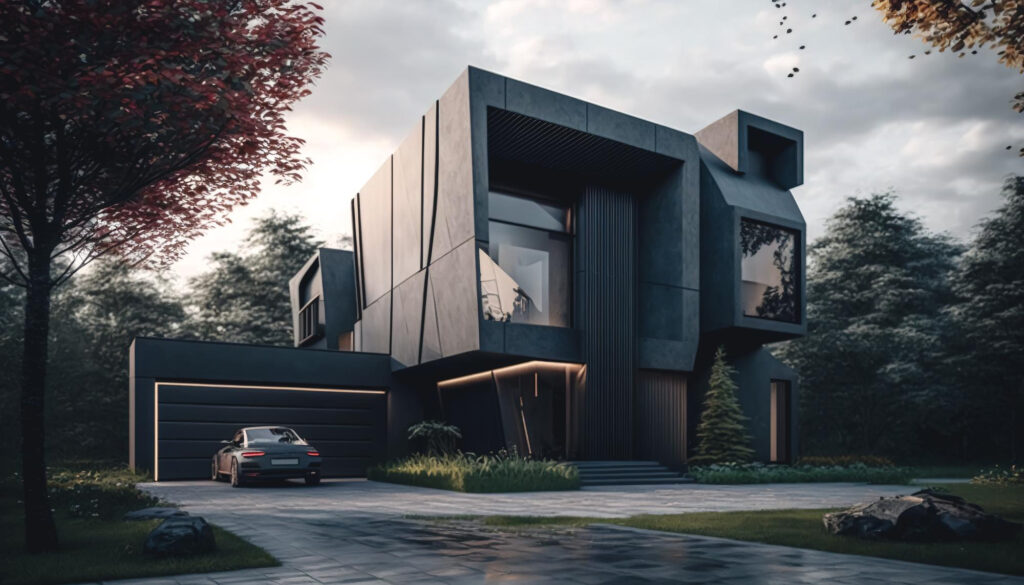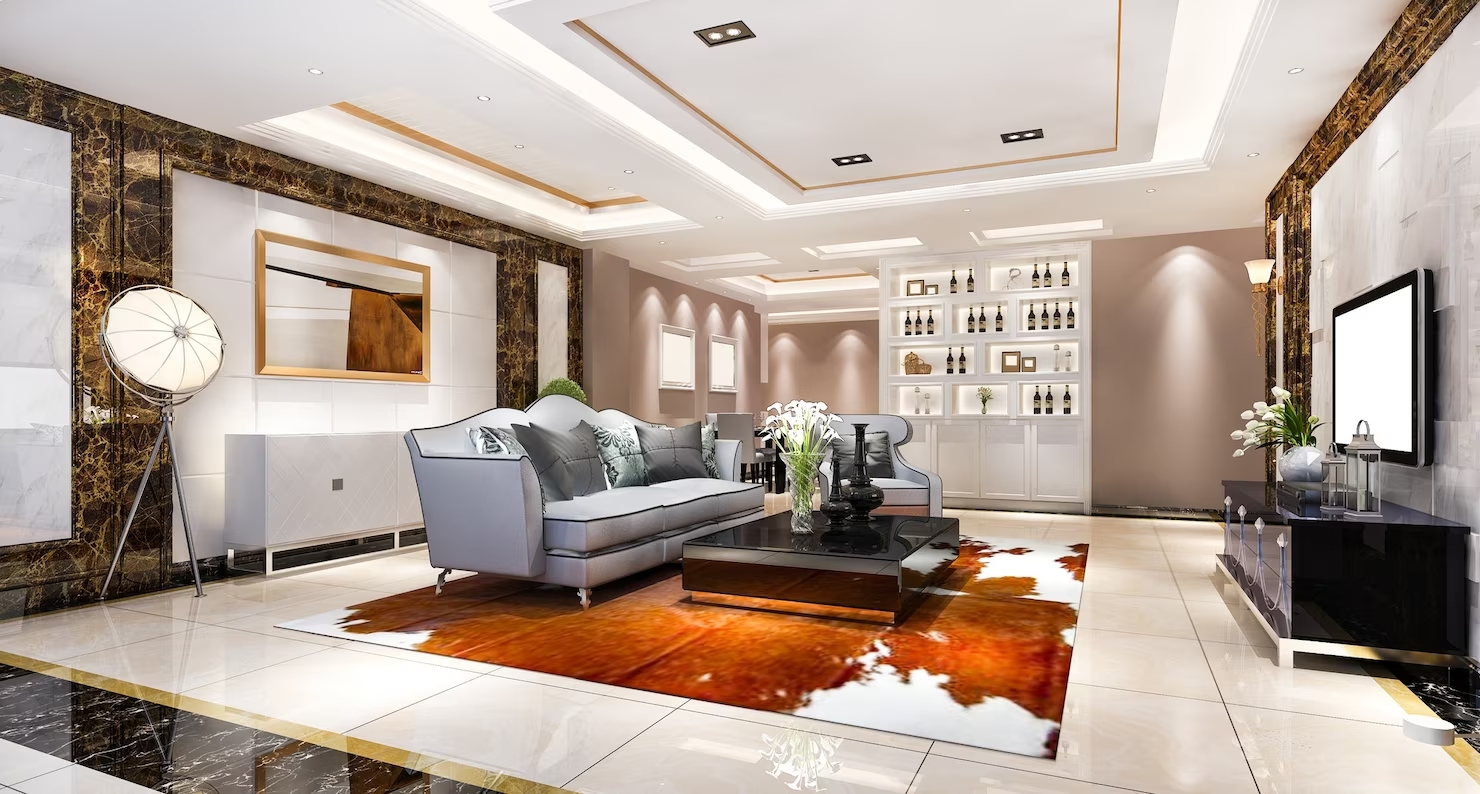Architectural Design: A Step-by-Step Guide
The architectural design process is the first step in any construction project. It allows you to visualize the future structure and calculate the required materials. The longevity of the house and the comfort of living in it are dependent on the accuracy of the architectural design project. Furthermore, there are numerous details to consider when creating architectural designs.
An illiterately designed project can result in disastrous outcomes and a waste of money. So, what is architectural design, why is it important, and how does the architectural design process work? I think we should go deeper.
What exactly is the role of an architectural designer? His tasks could include
- Collaborate with clients to discuss project requirements, schedule, and budget;
- Create project plans, drawings, and specifications. Adjust project based on client feedback.
- Interaction with engineers, builders, architects, and project managers during project implementation;
- Calculate cost estimates, time, technique, and construction based on the project;
- Ensure that the project complies with building standards and regulations.
- Data on materials, sizes, and measurements are collected and used for project planning.
Visiting construction sites to monitor the project.
What is architectural design?
Architectural design is a project activity that aims to create an aesthetically pleasing and comfortable living environment for humans. In a nutshell, it is the art of architectural design and construction. Architecture design enables you to create such objects, which are already considered components of the aesthetic organization of the architectural environment during the design phase.
Thanks to such complex solutions, architectural objects are no longer just buildings; they also influence the formation of living conditions and the appearance of modern cities. Architectural building design is defined as the integration of technical standards, construction rules, and aesthetic components into building design and planning. Architect design aims to realize clients’ ideas and make future buildings more comfortable to live in.
We are accustomed to viewing an architectural project as a complex of schemes and drawings, complete with numerous signs and symbols that only professionals can understand. However, architectural designing is more than just pure geometry; it also takes into account spatial perception and aesthetics. The lines simply represent the shapes, sizes, and positions of various spaces. When working on an architectural project, an expert must consider the customer’s needs and resources, the aesthetic and technical properties of the object, and, of course, the construction rules.
The primary goal of architectural design is to find optimal building solutions, employ various techniques, and select materials to create comfortable and aesthetically pleasing conditions for life, work, and leisure. Because of this approach to architectural design, it is possible to create unique facade projects as well as comfortable, beautiful, and safe places for walking, playing, and participating in sports outside of buildings.
- Directions for architectural object design: Architectural design for residential buildings. Work is done on the appearance of the house, its interior, and the surrounding area.
- Public building construction and architectural design. Banks, retail establishments, offices, and stores all fall under this category. The goal of architects and designers is to present the building in a way that draw in clients.
- design for architecture and cities. It is important to consider the object’s characteristics, location, surrounding landscape features, and climate when developing projects for ergonomic buildings and structures in urban industrial zones.
- Squares, parks, city squares, embankments, and streets: their architectural and structural designs. Public space design and country home lot design are included.


Concept for architectural design
An abstract idea known as an architectural design concept shapes a project’s fundamental identity. It serves as the essential foundation upon which all architectural concepts are formed and grow. The architect’s design concept propels the project forward and also supplies the necessary operational framework.
The goal of developing an architectural concept is to assess the project’s scope and schedule while learning more about the object’s architectural characteristics, design complexity, and construction costs. It’s crucial to remember that the idea is dynamic and could change as the project progresses. The concept may change in tandem with changes made to the design.
The process of designing architecture
Preparing for a project involves several important steps. First, experts determine the preferences and goals of the client, examine the site, determine whether the building is feasible, and evaluate how well the plan blends in with the current architectural styles. In addition, specialists perform geodetic measurements, collect soil samples, and examine the site’s location. These results form the foundation for the schematic drawings of all necessary structures. Before beginning the detailed design and construction phases of the project, this comprehensive process guarantees a complete understanding of its parameters.
Design advancement. The development of the project concept is the second phase of architecture design. This idea makes it possible to evaluate the object’s potential in the future and to specify exactly what needs to be done. At this point in the architectural design process, an evaluation and general understanding of the object created are appropriate.
The development of a schematic design is the third step in the design architecture process. It enables you to ascertain the building’s primary features, layout, and appearance. In other words, The schematic design allows the client to view drawings of the interior floor plan and the exterior of the home, including its volume, giving them a comprehensive understanding of the future structure.
The architect developed a comprehensive set of materials known as construction documentation. floor plans, facades, roofs, assemblies, details, architectural sections, explanatory notes, and other relevant components. This compilation includes all drawings, plans, and technical specifications necessary for the construction project. The entire set is essential to coordinate the ongoing construction process effectively.

How does one become an architect or an architectural designer?
Additionally, an architect must acquire a formal architecture degree from an accredited university. This is essential to becoming an architect. Furthermore, passing the ARE (Architectural Registration Examination) is a crucial step in validating the professional’s technical and critical architectural knowledge. Consequently, architects also need to register with the state government in the state where they practice. In contrast, architectural designers typically handle smaller, less complex projects.
architectural design types
- First of all, architecture and design trends shift quickly, assuming new shapes and expressions. Additionally, building architecture design aids in the development of new ideas and taking into account several variables. Furthermore, including location, safety, and aesthetics, we design concepts and aesthetics. In addition, structures designed for various purposes cover certain requirements for them to function successfully. Moreover, creating designs that are both practical and affordable is the goal of architectural designers. Furthermore, buildings with green roofs and solar panel additions are growing in popularity. Lastly, forms merge, elements are added, and changes occur in both architecture and nature.Some of the most well-known forms of architecture are:
- Gothic and ancient building styles
- Renaissance
- Modernist
- Victorian
- Architecture, both contemporary and postmodern
- neo-futuristic building design.
- Study up on the various types of architecture.
The value of architectural design
Every structure’s construction has always relied heavily on architectural design. Even in the pre-existing era, people were in awe of the creation of grand, striking, multipurpose structures, carefully considering every architectural detail. Buildings to fulfill specific requirements and serve specific purposes, depending on the goal—to worship the gods, defend against enemies, or display strength and power. The construction and longevity of the Egyptian pyramids continue to astound us. Object planning includes architecture design as a fundamental component. It considers crucial elements like appearance, aesthetic appeal, durability, and safety.
Conclusion
Because it considers the aesthetic and creative aspects of the process as well as the different aspects of space use that are technically feasible or not, the architectural design is an essential foundation for the final architectural construction.
We have covered a lot of ground in this article, including the definition of architectural design, what constitutes an architectural designer, and the stages involved in the process. Utilize our 3D architectural rendering services to take the first step toward realizing your project!

